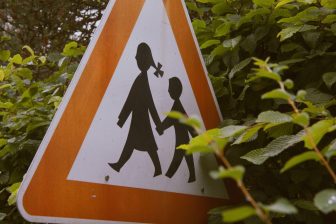
6 elements to promote soft urban mobility for – and with – children
TaMaLaCà has developed several urban solutions to the challenge of promoting soft urban mobility. The main one is the “Piedibus-Sassari”, a network of walking school buses in the city of Sassari. This article highlights the six key lessons derived from this project.
The contemporary city is a car-friendly city
Most urban mobility schemes are still designed to satisfy car-friendly parameters, producing several well-known problems: accidents; atmospheric, noise and aesthetic pollution; excessive time and soil consumptions, etc. Car-centric schemes also make the city a hostile place for those who cannot, or do not choose the motor vehicle. This is especially true for children, for whom it can be said that: “their freedom to move defines the limits of their world”.
When it comes to people’s rights to enjoy their city, constraining their mobility is an urgent issue, considerably reducing their freedom to act and make full use what the city offers – and not only for children. Only a significant reduction in the number of private cars can solve this problem, but what kind of urban action can help to achieve such a “radical” objective?
Walking School Bus and the car-free movement’s network
Instead of considering large-scale problems like accidents and pollution, whose causes are beyond the ordinary experiences of most people, we prefer to concentrate on the daily problems of urban living that have immediate consequences for their quality of life: for example, the soil and time consumption at a local level. Let’s consider the car-free movements that are improving more and more all over the world: Parking Day, Critical Mass, Walking School Bus, etc. These are all independent, voluntary, grass-roots movements with the power to:
- Draw attention and generate local public debate on the problems;
- Form empowered groups of citizens committed to finding solutions;
- Indirectly create possibilities to solve the larger scale problems.
As such, the car-free movement can be seen as a collective, bottom-up network of activists, with great potential to effect change.
The six elements
These elements, or aspects, are recommended, not only for walking bus projects, but for all parts of the car-free movement network. They may also be adopted as useful tools to develop further activity to promote soft urban mobility.
- Constructive conflict, as a tool to denounce urban inequality in mobility.
- Mass, which gives energy and visibility not only to actions, but also to the arguments.
- Playfulness as an element to engender large-scale inclusion, and to manage conflict constructively.
- Involvement of people who may not otherwise be able to, or interested in, protest – and so the possibility to build grass-roots collective action.
- High visibility (not only mass, but also colour, sound and fun!) and irony as a hook to attract and share the message.
- Slowness as a key to developing an empowered, inclusive network with a strong sense of community.
Author: TaMaLaCa – Interdisciplinary research group




